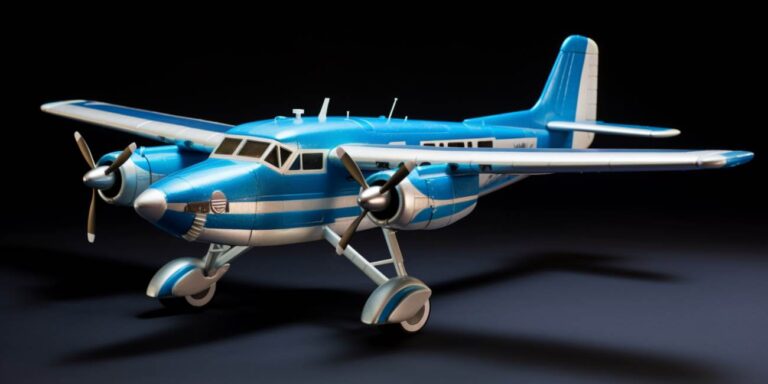One of the standout models in the Cessna single engine lineup is the Cessna 172 Skyhawk. Renowned for its remarkable stability and ease of handling, the Cessna 172 has been a preferred choice for training purposes. Its high-wing design and robust construction make it an ideal platform for honing piloting skills.
For those seeking a more powerful option, the Cessna 182 Skylane steps into the spotlight. Boasting a more potent engine, this model delivers enhanced performance without compromising on the comfort and practicality that Cessna is known for. The tricycle landing gear ensures excellent ground handling, making it suitable for a variety of airfields.
Stepping up the ladder, the Cessna 206 Stationair offers a spacious cabin and the ability to carry more passengers and cargo. This model caters to those with a penchant for adventure, enabling trips to remote destinations with its robust design and reliable engine.
Comparing these Cessna single engine models, a key consideration is the mission profile. The Cessna 172 excels in training and local flights, while the Cessna 182 and Cessna 206 open the door to more extensive journeys, whether for business or pleasure.
Another critical aspect is the engine specifications. The Cessna 172 typically features a four-cylinder engine, while the Cessna 182 and Cessna 206 boast six-cylinder engines, providing additional power for increased speed and payload capacity.
When it comes to avionics, all these models are equipped with state-of-the-art technology, including Garmin navigation systems and glass cockpits for enhanced situational awareness. This ensures that pilots can navigate safely and efficiently, even in challenging conditions.
For those with an eye on efficiency, the Cessna Turbo Stationair takes the stage, featuring a turbocharged engine for improved high-altitude performance. This makes it an excellent choice for pilots who frequently operate in mountainous regions or require expedited travel at higher altitudes.
Comparison of the most popular single engine cessna 152 and cessna 172 models
The Cessna 152 and Cessna 172 are two iconic single-engine aircraft models that have played significant roles in pilot training and recreational flying.
Starting with the Cessna 152, it is a smaller and lighter aircraft compared to its counterpart, the Cessna 172. The 152 is often chosen for initial flight training due to its simplicity and cost-effectiveness. It has a Lycoming O-235 engine, producing 110 horsepower, and a maximum speed of around 109 knots. The two-seater configuration makes it an ideal choice for student pilots and flight schools.
On the other hand, the Cessna 172 is a larger and more powerful aircraft. It typically features a Lycoming IO-360-L2A engine, generating 180 horsepower. This extra power allows the 172 to carry more weight and operate at higher altitudes. The four-seater configuration makes it suitable for both training and cross-country flights, catering to a broader range of pilots.
One key difference is the performance capabilities of these aircraft. The Cessna 172 generally has a higher maximum takeoff weight and a longer range compared to the Cessna 152. This makes the 172 a better choice for pilots who intend to fly longer distances or carry more passengers and cargo.
When it comes to avionics and cockpit features, both models have evolved over the years. However, the Cessna 172 often comes equipped with more advanced avionics and navigation systems. This includes features like GPS navigation, autopilot systems, and more sophisticated instrument panels, providing a more modern flying experience.
Another crucial aspect is the fuel efficiency of these aircraft. Generally, the Cessna 152 tends to be more fuel-efficient due to its smaller engine and lighter overall weight. This makes it an attractive option for pilots and flight schools looking to minimize operating costs.
Both the Cessna 152 and Cessna 172 have established themselves as reliable and versatile aircraft in the aviation community. The choice between the two ultimately depends on the pilot’s specific needs, training objectives, and intended use of the aircraft.
Performance and handling differences between the cessna 152 and cessna 172
The Cessna 152 and Cessna 172 are two stalwarts in the world of general aviation, each with its unique characteristics that cater to different pilot preferences and missions. Let’s delve into the performance and handling differences between these two aircraft, focusing on key aspects such as stall speed, cruise speed, range, and fuel consumption.
Starting with the stall speed, a critical parameter influencing an aircraft’s safety, the Cessna 152 boasts a lower stall speed compared to the Cessna 172. With its lighter frame and design tailored for flight training, the Cessna 152 typically experiences a stall speed of around 44 knots, providing a margin of safety during low-speed maneuvers.
On the other hand, the Cessna 172, being a larger and more powerful aircraft, has a slightly higher stall speed at approximately 48 knots. Pilots transitioning from the Cessna 152 to the Cessna 172 need to be mindful of this difference in handling characteristics, especially during landing and approach phases.
When it comes to cruise speed, another crucial factor for pilots planning cross-country flights, the Cessna 172 takes the lead. Its more robust engine and aerodynamic design enable it to achieve a higher cruise speed compared to the Cessna 152. Typically cruising at around 122 knots, the Cessna 172 covers distances more swiftly, making it a preferred choice for longer journeys.
Conversely, the Cessna 152, with a cruise speed of approximately 108 knots, is better suited for shorter hops and flight training missions. Pilots seeking efficiency over speed may find the Cessna 152’s cruising capabilities more than sufficient for their needs.
When evaluating the range of these aircraft, which is a crucial consideration for flight planning and fuel management, the Cessna 172 once again excels. With its larger fuel tanks and more fuel-efficient engine, the Cessna 172 boasts an impressive range of around 800 nautical miles, allowing pilots to explore vast distances without the need for frequent refueling stops.
Comparatively, the Cessna 152, designed primarily for flight training purposes, has a more limited range of approximately 415 nautical miles. Pilots operating the Cessna 152 must plan their routes meticulously, considering fuel stops for longer journeys.
Turning our attention to fuel consumption, a critical economic factor for both recreational and training flights, the Cessna 152 demonstrates superior fuel efficiency. With its smaller engine and lighter weight, the Cessna 152 consumes less fuel per hour compared to the Cessna 172.
On the contrary, the Cessna 172, while offering greater speed and range, comes with a higher fuel consumption rate. Pilots opting for the Cessna 172 should factor this into their operational costs, especially during extended flights where fuel expenses can significantly impact the overall budget.
Overview of other notable cessna single engine piston models such as the cessna 182 and cessna 206
The Cessna 182 and Cessna 206 stand as notable members in the family of single-engine piston aircraft, each offering distinctive features and capabilities.
The Cessna 182, commonly known as the Skylane, is celebrated for its robust performance and versatile utility. With a useful load of around 1,100 pounds, this aircraft strikes a balance between efficiency and functionality. Its wingspan spans 36 feet and 10 inches, contributing to its stable flight characteristics.
Ascending to new heights, the Cessna 206 claims its place as a six-seater, single-engine aircraft with impressive load-carrying capabilities. Its useful load reaches up to 1,550 pounds, making it a preferred choice for missions demanding both passengers and cargo. The wingspan of the Cessna 206 extends to 36 feet and 8 inches, providing a broad wing area for enhanced lift and stability.
Delving into their altitude prowess, both models boast an impressive service ceiling. The Cessna 182 soars to approximately 18,100 feet, while the Cessna 206 ascends even higher, reaching a service ceiling of around 27,000 feet. These altitudes showcase their capability to operate efficiently in diverse atmospheric conditions, making them suitable for various missions.
Comparing these models, the Cessna 206 emerges as the heavyweight champion, excelling in both useful load and service ceiling. Its robust construction and powerful engine make it a go-to choice for missions requiring higher payloads and demanding flight altitudes.
Table below presents a concise comparison of key specifications:
| Model | Useful Load | Wingspan | Service Ceiling |
|---|---|---|---|
| Cessna 182 | 1,100 lbs | 36 ft 10 in | 18,100 ft |
| Cessna 206 | 1,550 lbs | 36 ft 8 in | 27,000 ft |
See also:
- The best cessna 152 price on the market cessna 152: select the cheapest offer
- Single engine piston aircraft: what you need to know before becoming a pilot
- Flying solo: your guide to owning a single-engine cessna plane
- Embraer 170 versus boeing 737 – which passenger plane is better?
- Why airbus aircraft are considered safer than boeing





